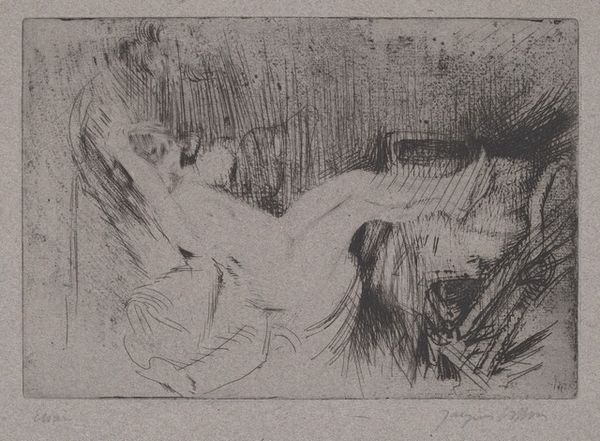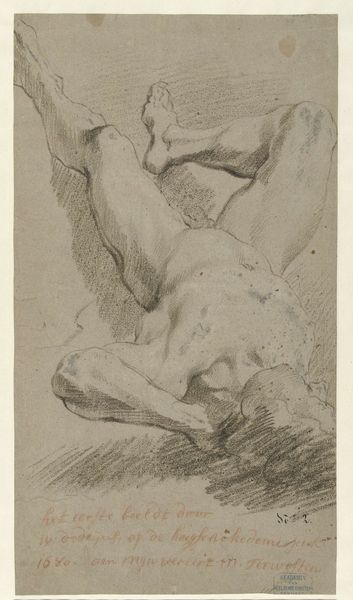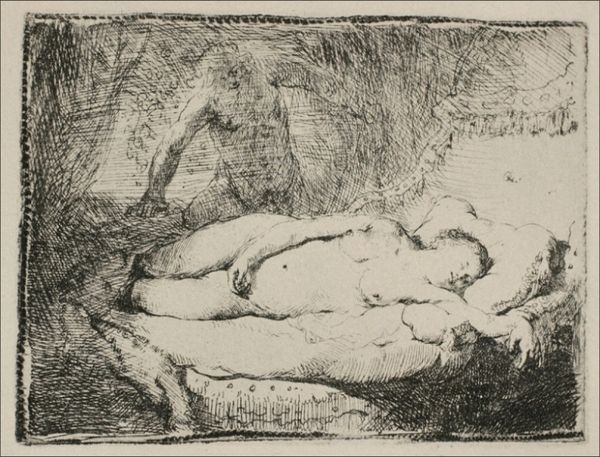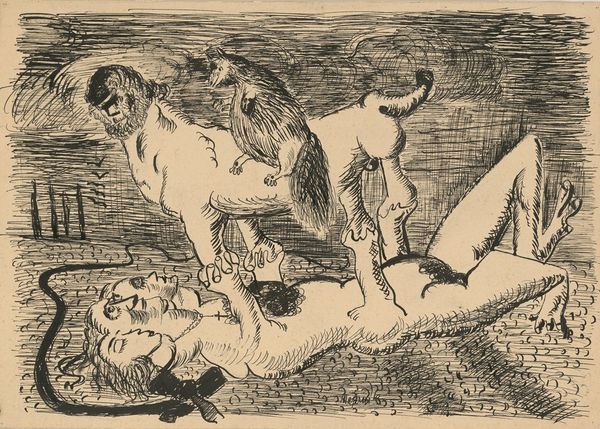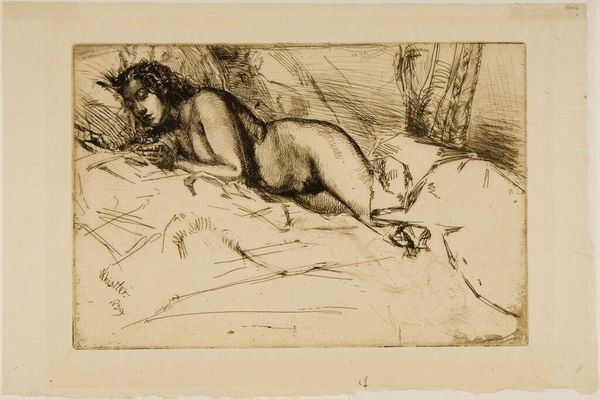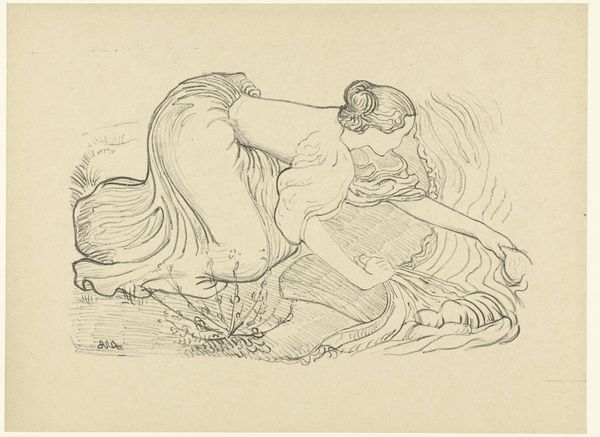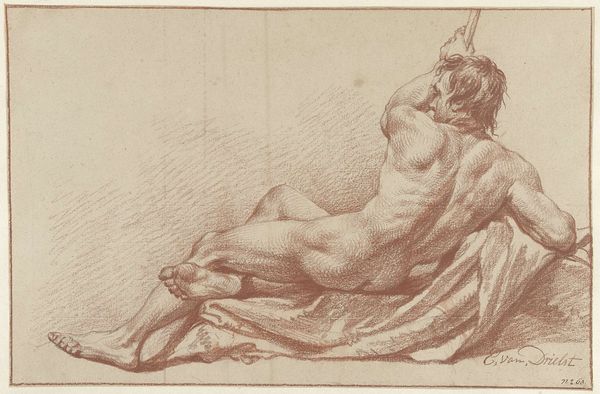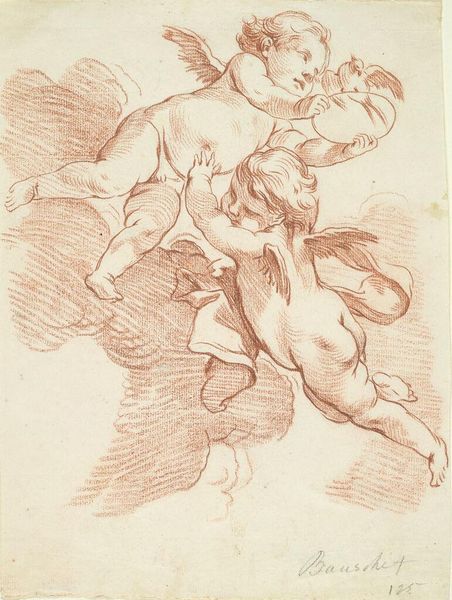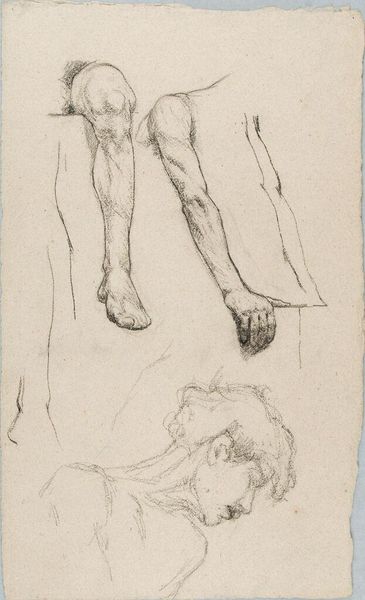
print, engraving
# print
#
figuration
#
history-painting
#
italian-renaissance
#
nude
#
engraving
Dimensions: height 84 mm, width 162 mm
Copyright: Rijks Museum: Open Domain
Editor: So, here we have "Fragment from Jupiter Sending the Three Goddesses to the Judgement of Paris," a 1543 engraving by Antonio Fantuzzi. It's predominantly figurative, showcasing a nude goddess. I find it compelling, yet incomplete – a tantalizing glimpse. What narratives do you see woven within this fragment? Curator: The fragment itself speaks volumes. Fantuzzi extracts a piece of a larger story, Jupiter's command. Consider the symbolism embedded here. We see a goddess reclining. Does her posture evoke classical ideals of beauty and power or something else? The grapes woven in her hair, are they simply decoration, or do they refer to the divine realm or perhaps, fertility? Editor: I hadn't considered the grapes in her hair. It leans more into the divine now, rather than just beauty. Is this common, to see truncated narratives in this era? Curator: Yes, fragments like this offered artists opportunities to play with allusion and ambiguity. Consider how a knowing audience familiar with the Judgment of Paris myth might complete the narrative. What emotions might Fantuzzi be aiming to trigger, through this partial view? The suspense it creates is rather striking, wouldn't you agree? Editor: Absolutely. Knowing that this is a segment heightens the importance of those small details. Curator: What does the *act* of fragmenting tell us? Did the artist want us to focus intently on the goddess’ form, divested from the narrative? Editor: I see. The act of isolating emphasizes the form and invites closer, more critical interpretation of even the smallest elements. That context really enriches how I view this. Thanks! Curator: Indeed. It is the power of the fragment, compelling us to reconstruct stories and meanings beyond the immediately visible. Fascinating, isn't it?
Comments
No comments
Be the first to comment and join the conversation on the ultimate creative platform.
